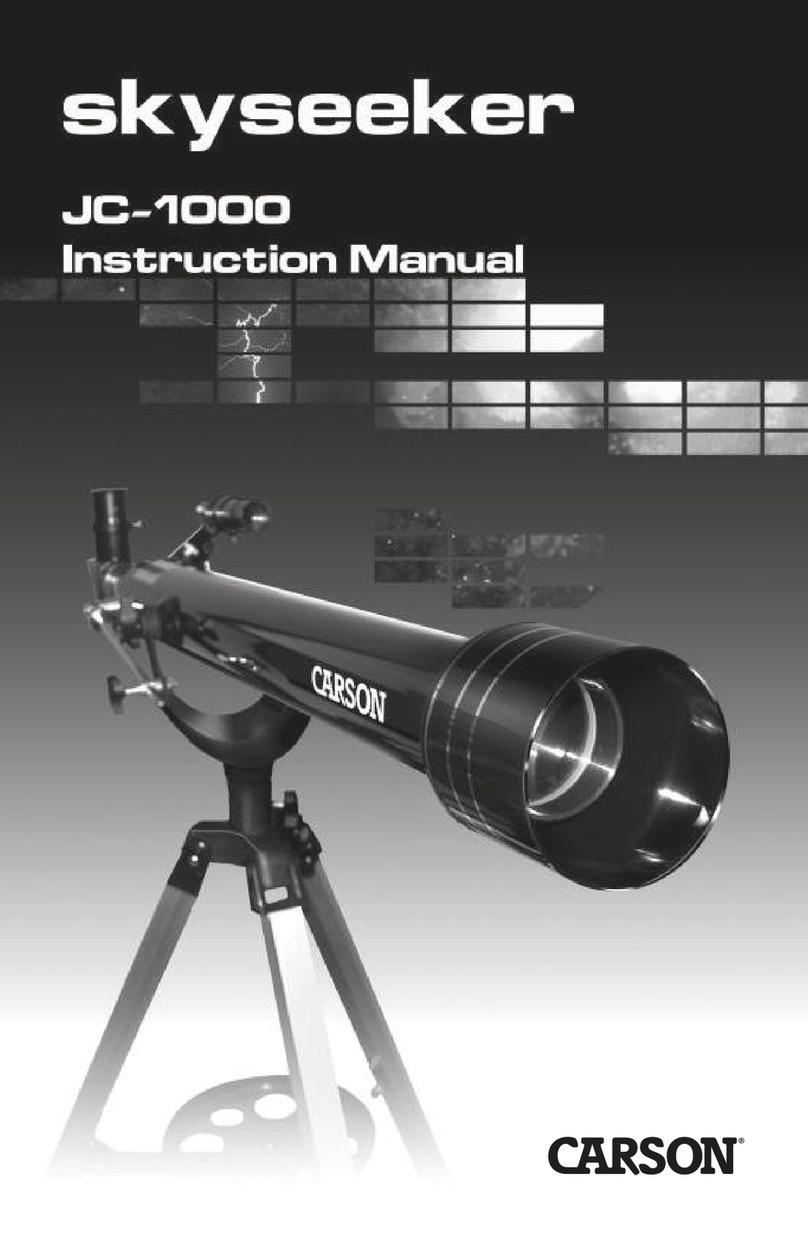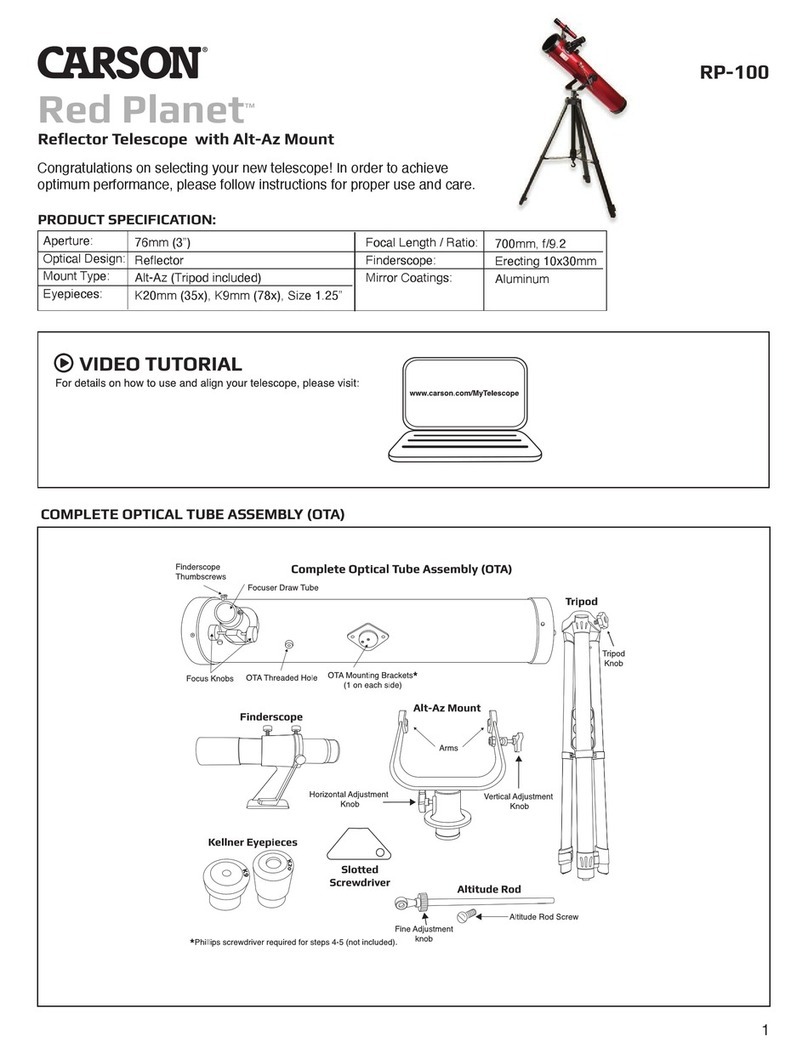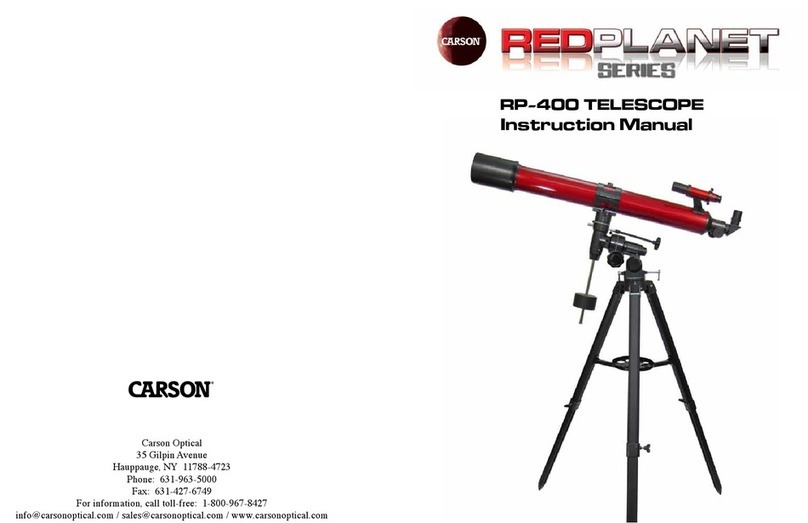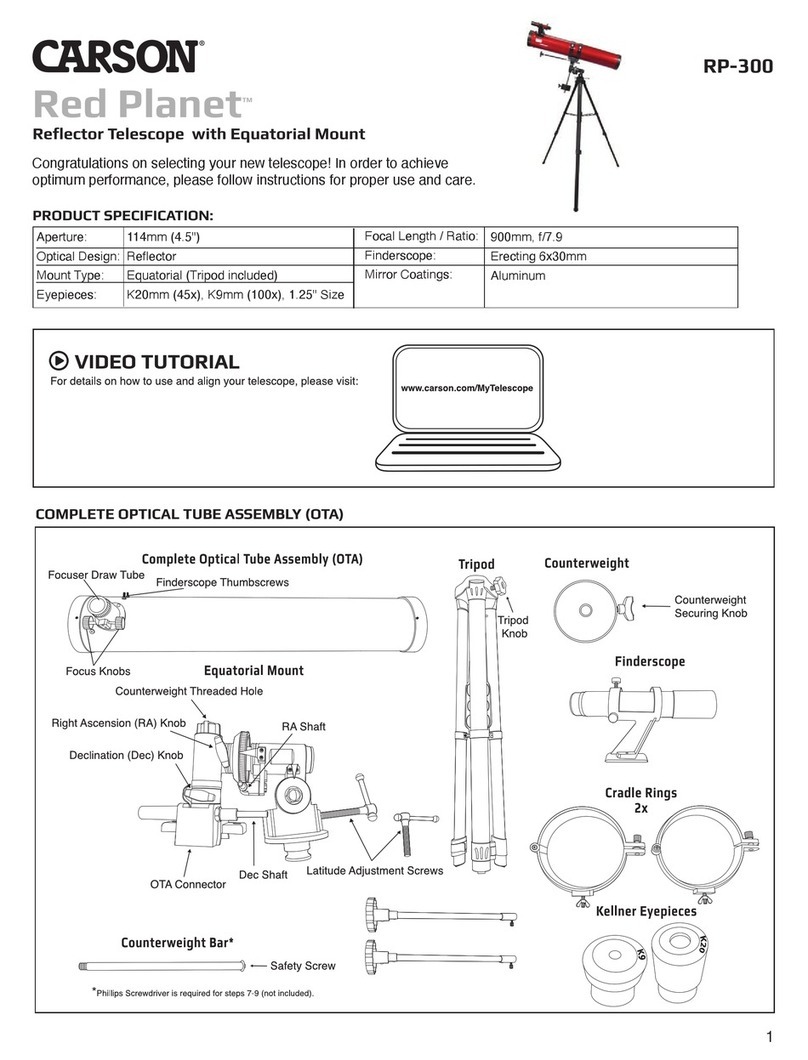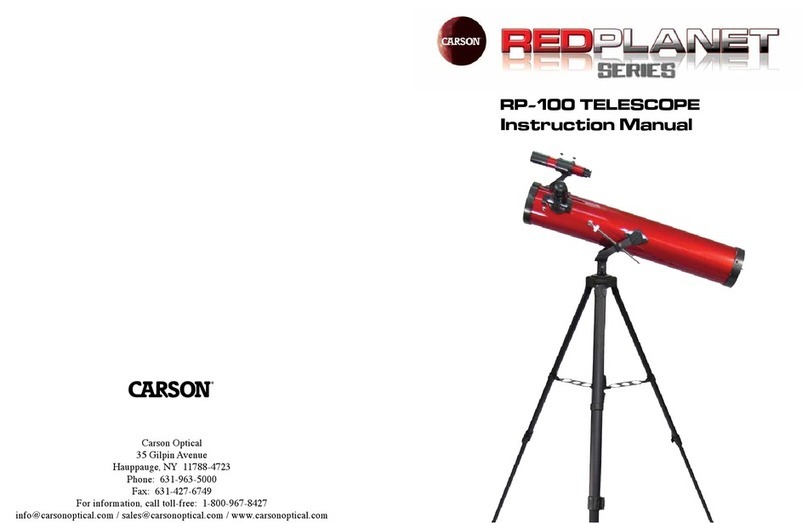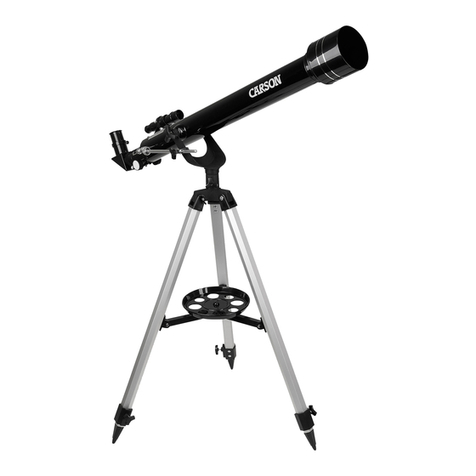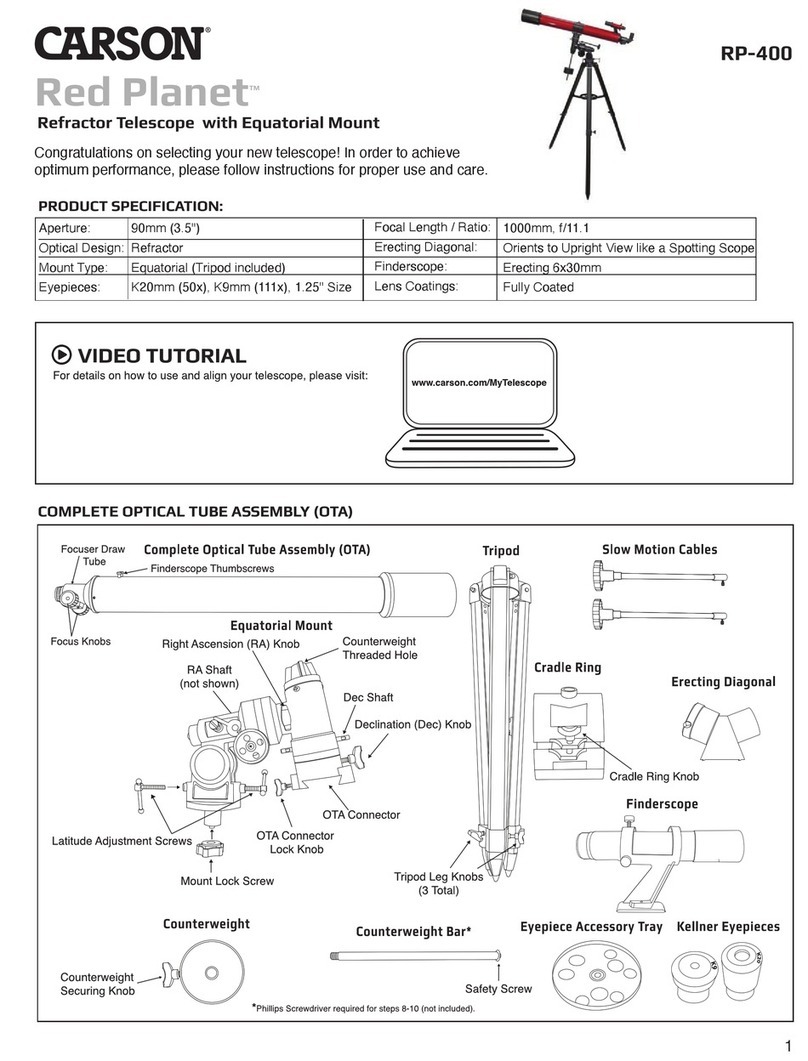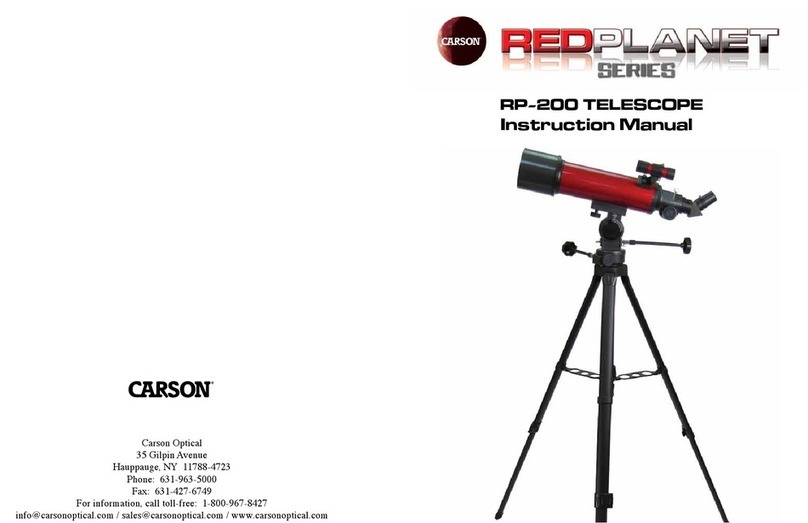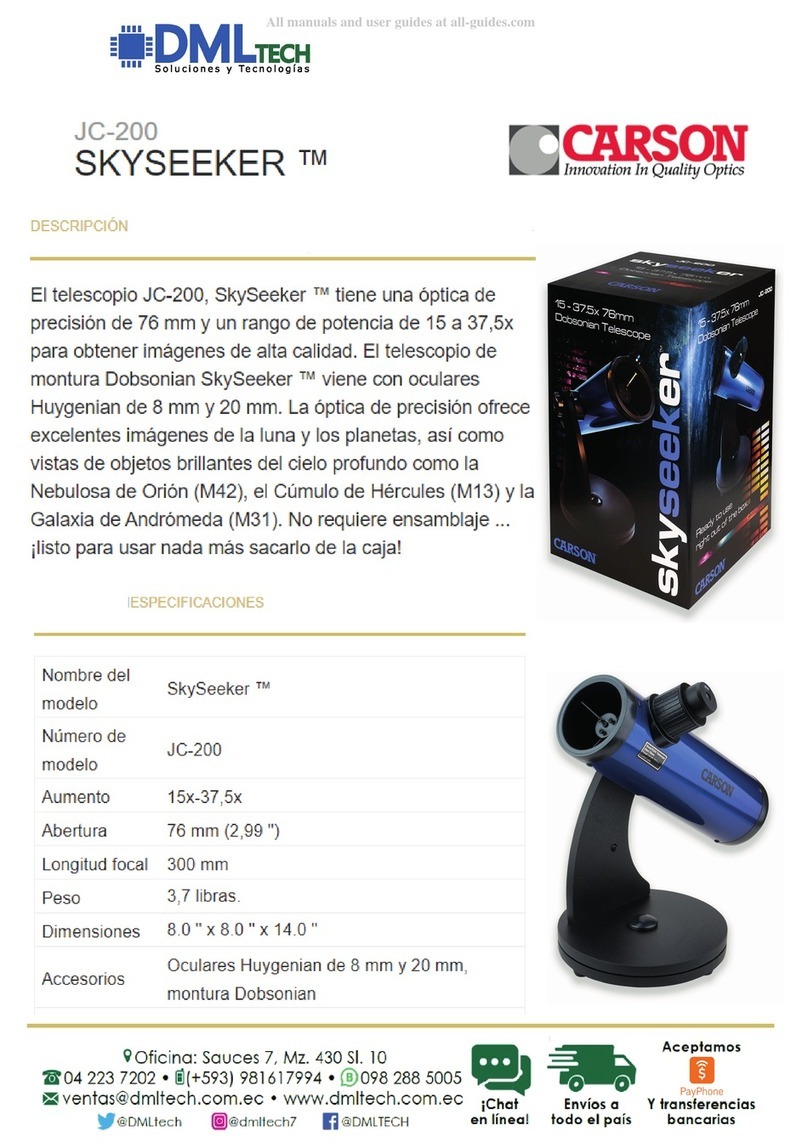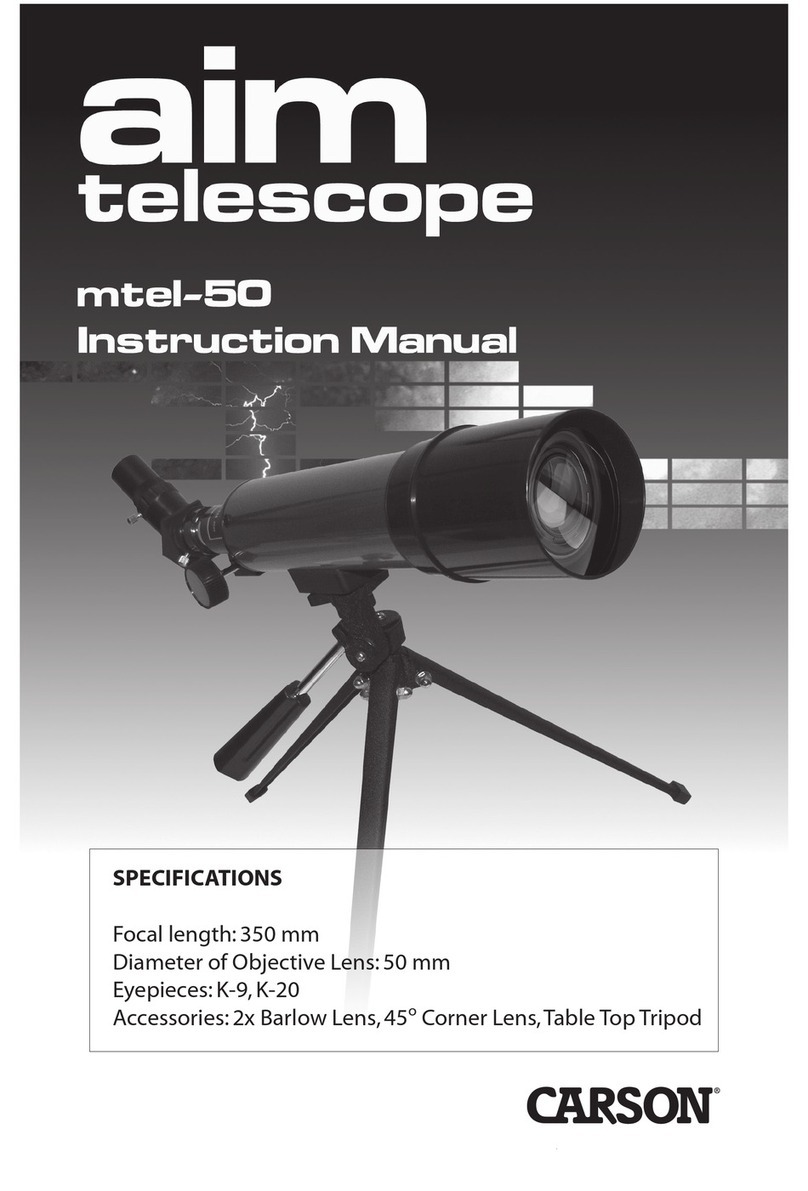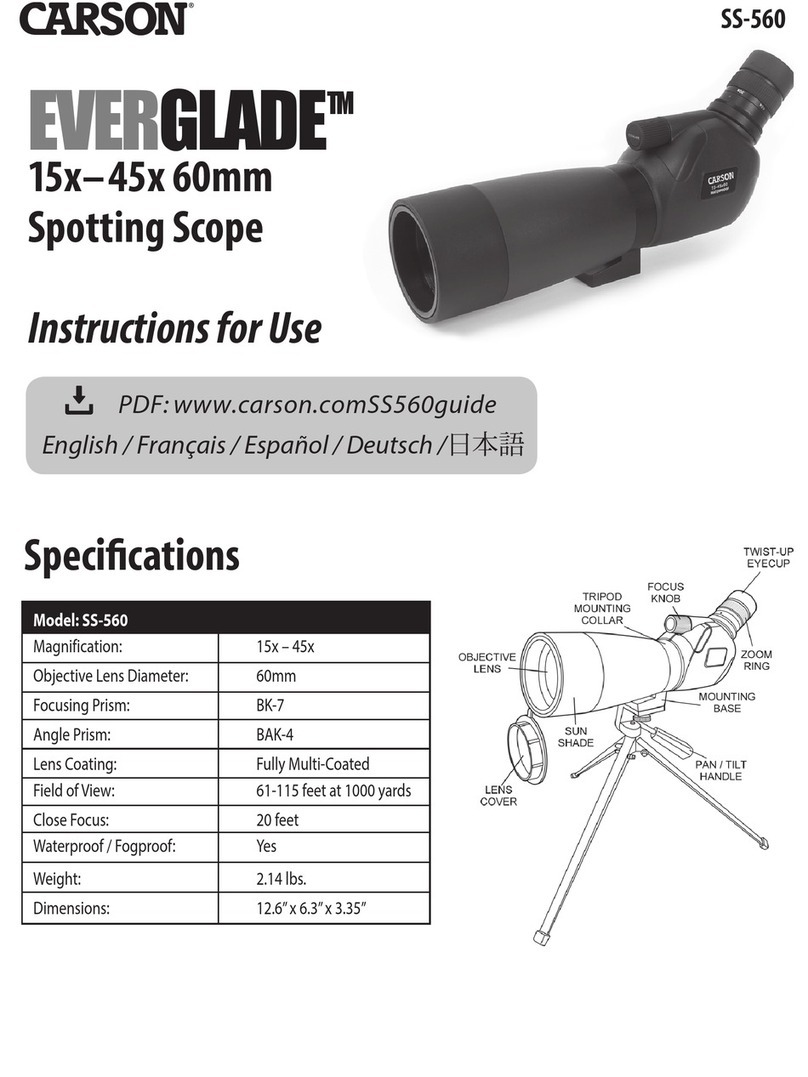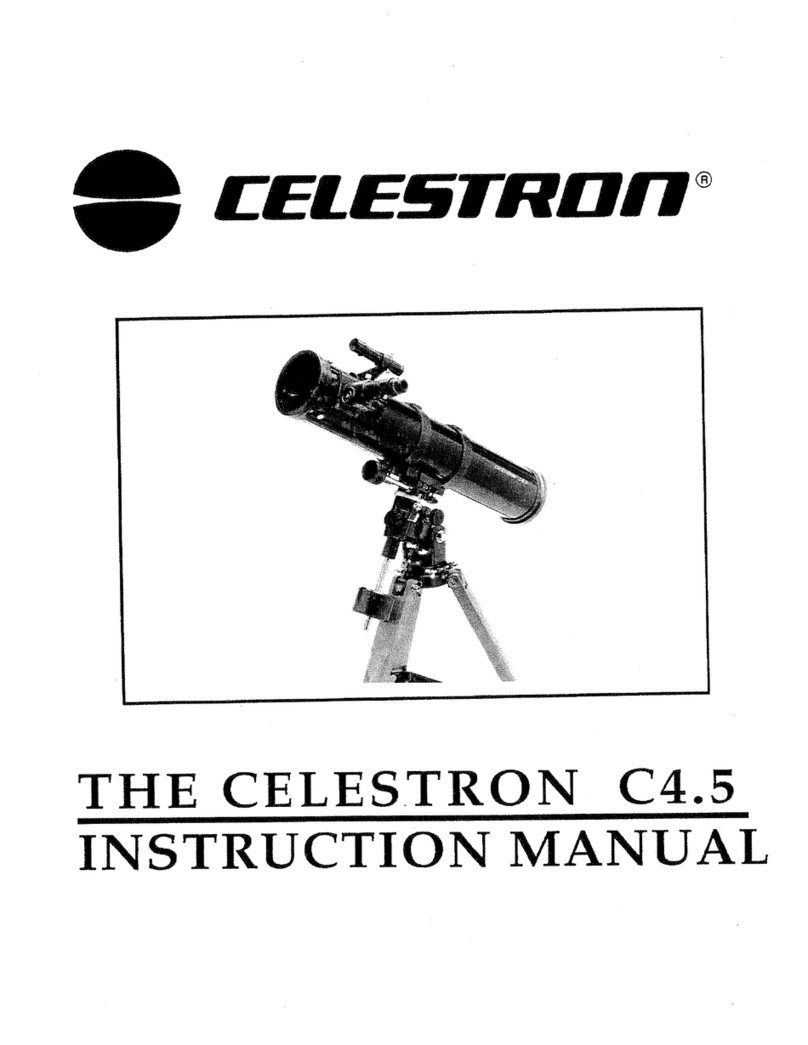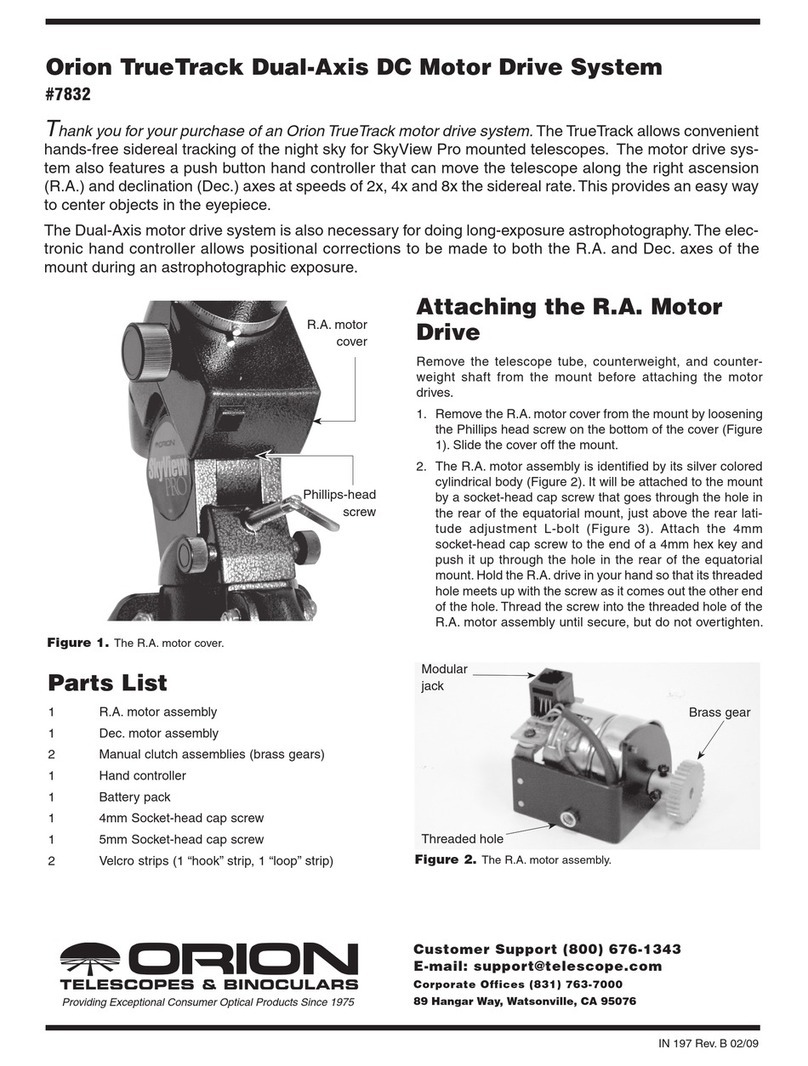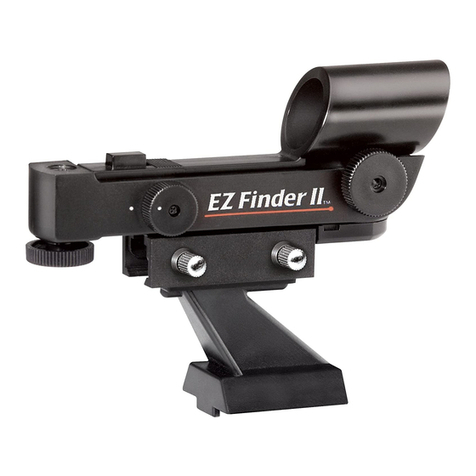UnderstandingCelestialMovement:
Inordertogetthemostenjoymentoutofyourtelescopeitisnecessaryto
knowthebasicsofhowcelestialobjectsmoveacrossthesky.Duetothero-
tationoftheearth,celestialobjectsappeartomovefromEasttoWestacross
thesky,muchliketheSun.Youwillnoticethismovementasanobjectin
yourtelescopeeldofviewwillslowlymoveacrosstheeldandoutof
view.Continuousadjustmentisneededtokeepanobjectintheeldofview.
This will be explained in more detail later.
Manypeoplechooseto“star-hop”whenusingatelescope,aquickandrela-
tivelyeasywaytostart.Thisisamethodofusingeasilyidentiablestars
andconstellationstoserveasreferencepointstondotherobjectsinthesky.
Amoreadvancedandprecisemethodoflocatingspeciccelestialobjectsis
byusingsettingcircles(Fig.3-16,17)locatedonyourequatorialmount(Fig.
2-10)tondthecelestialcoordinatesofthatparticularobject.
A Brief Overview of Celestial Coordinates:
Astronomersuseasystemof“celestialcoordinates”similartotheEarth’s
latitudeandlongitudesystemtohelplocateobjectsinthesky.Allcelestial
objectsaremappedona“celestialsphere”,animaginarysphereofarbitrary
sizeconcentricwiththeEarth.IfyouextendtheEarth’srotationalaxisto
innity,bothNorthandSouth,thepointsatwhichthisaxisintersectsthe
celestialsphereareknownastheNorthCelestialPoleandtheSouthCelestial
Pole.IfyouprojecttheEarth’sequatoroutwardtothecelestialspherethis
wouldbeknownasthe“CelestialEquator”.
Theequivalenttolatitudelinesonthecelestialsphereareknownaslinesof
“Declination”,or“Dec.”forshort.Theselinesaremeasuredindegrees,min-
utesandseconds.Declinationreadingsnorthofthecelestialequatorcarrya
“+”sign,whilereadingssouthofthecelestialequatorcarrya“-“sign.Ob-
jectslocatedonthecelestialequatorhavea0°0’0”Declination.TheNorth
CelestialPolehasa+90°0’0”DeclinationwhiletheSouthCelestialPolehas
a-90°0’0”Declination.ThestarPolarisislocatedveryneartheNorthCeles-
tialPoleandhasa+89.2°Declination.
Theequivalenttolongitudelinesonthecelestialsphereareknownaslines
of“RightAscension”or“R.A.”forshort.Theselinesaremeasuredinhours,
minutesandsecondsstartingatthe“zero”lineofR.A.whichpassesthrough
theconstellationPegasus.Thereare24primarylinesofR.A.locatedat15°
intervalsalongthecelestialequator.RightAscensioncoordinatesrangefrom
0hr0min0secto(butnotincluding)24hr0min0sec.
EverycelestialobjecthasacorrespondingR.A.andDec.coordinate.Given
the proper coordinates, you can use the setting circles on your telescope
mounttolocateanycelestialobject.Thecoordinatescanonlybeusedifthe
telescopeisrstalignedwiththeNorth(orSouth)CelestialPole.
Polar Alignment:
If the telescope is accurately aligned with the celestial pole, very little dec-
linationadjustmentwillbenecessarytotrackacelestialobject.Mostofthe
trackingcanbedoneusingtheRightAscensioncable(Fig.1-8).
To line up your telescope with the pole:
•Makesuretheequatorialmountislockedinthe“home”position,
meaning that the optical tube assembly is parallel to the correspond-
ing portion of the mount below it and that the declination axis is
straightupanddownwiththecounterweight(Fig.2-13)init’s
lowestposition.Forreference,theequatorialmountinFig.2isin
the home position.
•Loosentheequatorialmountlockingscrew(Fig.3-21)sothatthe
entiretelescope(withmount)rotatesfreelyonthetripod.
•RotatetheentiretelescopeuntilthepolaraxispointsdueNorth.If
you are not sure which direction is North, locate Polaris and point the
polar axis towards it. Polaris is less than one degree away from the
Celestial North Pole and is accurate enough for polar alignment.
•Ifneeded,levelthemountbyadjustingthetripodlegsaccordingly.
•Determinethelatitudeoftheareayouarein.Usethelatitudeturn
screws(Fig.3-19)totiltthetelescopeuntilthepointerindicatesthe
correctlatitudeonthelatitudedial(Fig.3-18).
•Thennetunethelatitudeturnscrews(Fig.3-19)untilPolaris
appearsinthecenterofyourtelescopeeldofview.
•DonotmovethetelescopeinR.A.orDec.whilepolaraligning.
Theseadjustmentsshouldremainlocked.
•IfyouliveintheSouthernHemisphere,youshouldfollowthese
stepsbutpointthepolaraxisdueSouthandlocateSigmaOctantis
instead of Polaris.
1514
